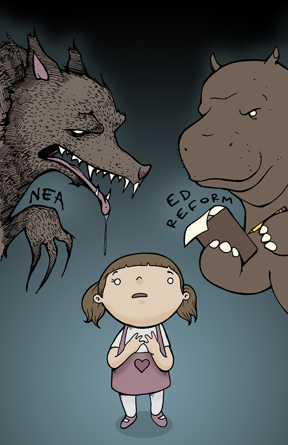Thirteen years ago, Utah launched a new charter school system. A charter school is a publically funded but independently operated school involving parents and educators addressing educational needs in their communities. It can experiment with new and often innovative teaching strategies to encourage and inspire students. During the past school year, there were 81 charters across the state serving just over 50,000 students. But many wonder, are charter school methods effective?

According to the Utah Comprehensive Accountability System (UCAS) scores, charter schools ranked practically dead even with public schools in student achievement and growth. It’s worth noting that demographics play a key in these numbers, just as they do in district schools. Charters schools with larger populations of ethnic and racial minorities, students as English learners, students with disabilities, and students from low-income households scored lower averages on standard tests. Schools with demographics in these groups showed at least 10% lower on the exams.
But demographics aside, some schools employ different methods and are achieving different results. A new grading system may help to zero in on what is and isn’t working in these schools. In September 2013, Utah issued “report cards” to every public school in the state, grading them on the standard A-F scale. These grades are given based on a school’s student proficiency in math, science and English. They also measure a school’s proficiency growth.
Over half of the charter schools in the state received high scores in the “A” and “B” range. But nearly 20% of them received a “D” or lower. In response to this, Utah’s Charter School board outlined a plan to evaluate their schools in three areas: academics, finances and governance. Chris Bleak, president of the
Utah Association of Charter Schools, plans to look at schools on an individual basis. Looking at their curricula may explain things. Several schools that received an “A” — Northstar, Wasatch Peak, American Preparatory Academy, George Washington Academy and Canyon Rim — utilize the Core Knowledge System. Core Knowledge is a K-8 educational reform movement aimed at common-learning that teaches specifics and shared knowledge. According to Core, “This concept… is a pioneering attempt to outline the specific core of shared knowledge that all children should learn in American schools.”
Many schools receiving failing grades are subject to low-income or minority demographics. However, there are some outliers that subscribe to different teaching methods. The Utah Virtual Academy is entirely online. Alianza’s students are all taught on computers at the school and practice “experiential learning,” which allows students to engage in real-world activities and develop senses by visiting art galleries and businesses. The Aristotle Academy and the CS Lewis Academy also rely on alternative curriculum. All of these schools received an “F.”
While demographics will always play a role in educational success, it appears that the Core Knowledge Foundation has been successful in Utah charter schools. This is especially true over schools that use other or less-defined educational approaches. Charter schools are expected to grow, and evaluating each lower-scoring school on an individual basis is a much-needed reform to get Utah caught up. §





